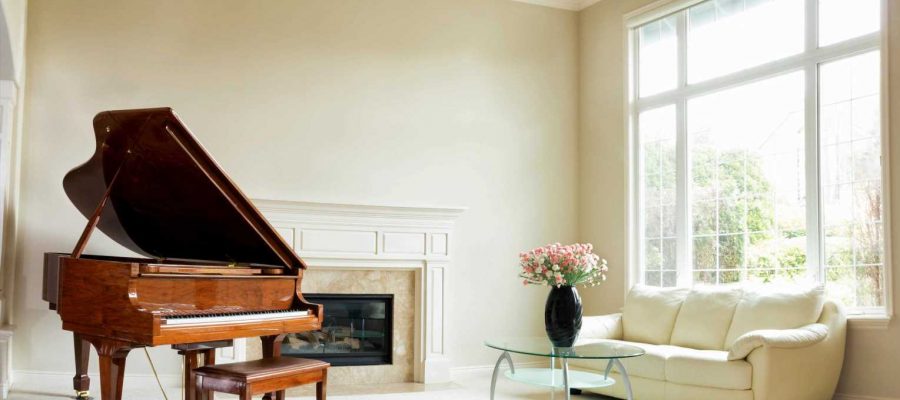We may receive payment from affiliate links included within this content. Our affiliate partners do not influence our editorial opinions or analysis. To learn more, see our Advertiser Disclosure.
Your baby grand piano and your vintage violin make your heart sing. But everything could hit a sour note if something terrible happened to the instruments and they weren’t properly insured.
Homeowners insurance typically covers musical instruments, but only up to a certain dollar amount. If your instruments are particularly valuable, you may need to purchase an add-on to your homeowners policy or even a separate policy in order to have full coverage.
Related: Best Homeowners Insurance Companies Of 2021
Related Stories
U.K. Travel? Here's What You Need to Know About Travel Insurance Before You Go
How to Find the Best Pet Insurance for Your Dog
Related Stories
'Silence of the Lambs': The Complete Buffalo Bill Story
The 80 Greatest Dylan Covers of All Time
Homeowners Insurance Limits for Musical Instruments
Your musical instruments are covered by a standard home insurance policy. But it might exclude coverage for the instrument if you play it for compensation of any amount or a certain level, such as compensation of more than $2,500 a year.
Homeowners insurance will typically kick in if your musical instrument is damaged by fire, vandalism or other problems covered by a standard policy. It also will cover theft.
Your homeowners policy has a total coverage limit for personal property (check your policy or ask your insurance agent). For example, if you have $150,000 in personal property coverage, and a vintage instrument valued at $50,000, that would leave you only $100,000 to replace all your furniture, clothes, electronics and everything else if there were a disaster like a fire. That’s why you need to insure the instrument separately.
Keep in mind that a standard homeowners insurance policy doesn’t cover flood or earthquake damage. So, for example, if your vintage violin is crushed by a falling picture during an earthquake, the damage won’t be covered unless you hold a separate earthquake policy.
To figure out whether you may need coverage for your musical instrument beyond your homeowners policy:
- Take an inventory of your musical instruments.
- Assign a value to each instrument. If the instrument is particularly valuable, get a professional appraisal.
- Consider extra coverage if your homeowners personal property insurance isn’t enough to cover the instrument plus the rest of your belongings.
Related: Best Homeowners Insurance Companies Of 2021
How to Get Extra Coverage for Musical Instruments
There are a couple of ways you can buy extra coverage for your musical instruments: add-on coverage to home insurance and separate coverage for instruments.
Add-On Coverage
Coverage added to your homeowners policy is known as a rider, endorsement, floater or scheduled personal property. Add-on coverage may come with a lower deductible than your homeowners policy. Also, it likely will cover a broader range of mishaps involving your instrument than a standard homeowners policy does, such as covering accidental damage.
You may run into a coverage limit even when you “schedule” the instrument, such as $20,000. And you may not be able to schedule the instrument if it’s used to perform for pay.
Standalone Coverage
Special coverage for musical instruments also is available. In some cases, one policy will cover several musical instruments up to the maximum dollar amount.
A professional appraisal of an instrument’s value typically will determine the amount of coverage needed. The insurance premium for a musical instrument may be as low as $250 a year, according to Trusted Choice, an organization for independent insurance agents.
Most standalone musical instrument policies cover an instrument no matter where it is, whether it’s stored at home in the U.S. or is with you on a trip to Italy.
Similar to add-on coverage, a musical instrument policy normally covers circumstances not included in standard homeowners coverage. For instance, if you drop your violin and it cracks, a musical instrument policy could pay for the damage (minus the deductible), while a standard homeowners insurance policy would not pay for accidental damage.
Here are some scenarios that a musical instrument policy may cover:
- Damage caused by changes in temperature or humidity
- Theft
- Fire damage
- Water damage
- Flood damage
- Earthquake damage
- Vandalism
- Damage during shipment
- Shoddy workmanship during a repair
Here are some scenarios that a musical instrument policy may not cover:
- Gradual deterioration
- Mold damage
- Damage caused by insects, worms, rodents or vermin
In addition to the breadth of coverage, another advantage to a separate musical instrument policy is that it normally provides what’s called “agreed value” coverage. Under this coverage, you and your insurer have agreed on a value for an item. If a covered instrument were to be damaged or stolen, for instance, the insurer would pay out the “agreed value” amount (minus any deductible).
This is especially important for high-value instruments that appreciate, so that they can be insured for their full value and there are no surprises if you have to make a claim.
Shopping for Musical Instrument Coverage
If you’re shopping for musical instrument insurance, obtain quotes from at least three insurers, and make sure those insurers are highly rated by a ratings agency like A.M. Best.
Information you’ll want to have on hand when you apply for musical instrument insurance includes:
- How much the instrument cost
- Where the instrument is stored
- How often the instrument is played
- How often you travel with the instrument
Related: Best Homeowners Insurance Companies Of 2021
Source: Read Full Article


